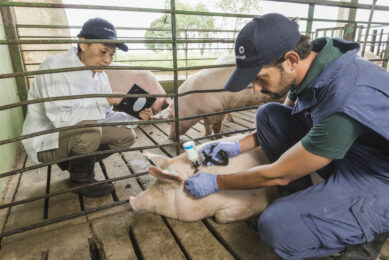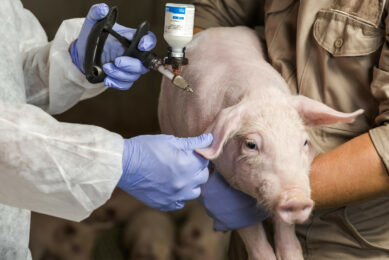Study: Regulating vaccination efficiency in swine
Using vaccination to induce a robust immune response has been an effective strategy for managing infectious diseases in humans and animals for more than a century. Now, Agricultural Research Service (ARS) scientists and colleagues have found that a concurrent parasite infection significantly compromises the effectiveness of a commonly administered vaccine in swine.
The study was conducted by researchers at the ARS Diet, Genomics and Immunology Laboratory in Beltsville, Md., led by microbiologist Joseph Urban, working with Nina Steenhard of the Institute for Veterinary Disease Biology at the University of Copenhagen in Denmark. ARS is the chief intramural scientific research agency of the U.S. Department of Agriculture.
For the study, 36 pigs raised on a pathogen-free farm were divided into four groups and studied for nearly three months. The researchers wanted to compare health indicators among three groups compared with an untreated control group.
The three groups included pigs that had been continuously exposed to a common worm infection; pigs that were exposed to the same worm infection, but vaccinated against Mycoplasma hyopneumoniae bacteria at week three; and a worm-free group that was similarly vaccinated against the bacteria at week three.
All pigs were infected with live M. hyopneumoniae bacteria via aerosol four weeks after the vaccine injections were administered. Another four weeks later, the tissue of all pigs were evaluated.
All worm-free, vaccinated pigs infected with M. hyopneumoniae tested 100 percent positive for vaccine-derived antibodies, meaning they presented an optimal serum response. But only 78 percent of the vaccinated pigs that had been worm infected developed serum antibodies. The other 22 percent were considered vaccine failures.
The worm-infected pigs also had a higher percentage of lung pathology than their non-worm- infected counterparts after vaccination and subsequent bacteria exposure.
These findings are an indicator of the importance of parasite control during vaccination. The next step is to conduct further field studies in environments where animals are susceptible to both worm and bacterial infection, according to authors.
©











